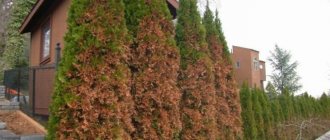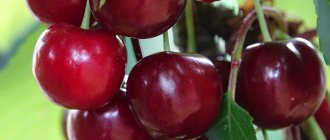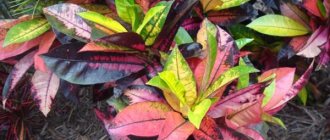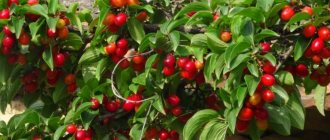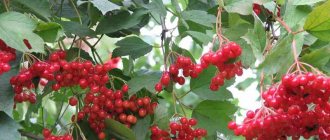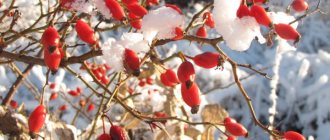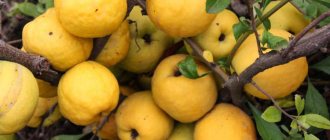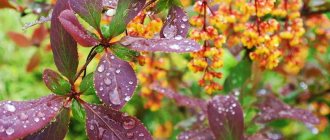Small serrated cherry is an amazing ornamental tree that turns into a pink cloud during flowering. This plant is native to Japan and China. The Asian beauty has recently appeared more and more often in the parks of Ukrainian cities and on our garden plots. This is not surprising, because not only residents of the Middle Kingdom and the Land of the Rising Sun should have the opportunity to admire the cherry blossoms.
It’s not for nothing that we mentioned the term “sakura”. Saw cherry is one of several plants that are part of this plant group. In general, finely serrated cherry belongs to the Rosaceae family. It is quite difficult for sakura to take root in the domestic climate, since the climatic realities of our country are far from what is usual for this variety of decorative cherry. But if you purchase a seedling of a frost-resistant variety grown on the island of Hokkaido, then you will have a good chance of growing a Japanese beauty in black soil. And all because the climate of this Japanese island is as similar as possible to ours. Consequently, finely serrated cherries born there are more easily adapted to domestic realities. Therefore, today let’s talk about what varieties, forms and varieties of Prunus serrulata (the Latin name of the tree) exist in nature and which of them are successfully grown in culture.
Main types of cherries
In the middle zone, 3 main groups of this fruit shrub can be distinguished: early-, mid- and late-flowering.
The first to bloom in the spring at the beginning of May are cherry bushes of the Kentskaya and Shpanka Kurskaya varieties. They are best suited for the middle zone, where the possibility of frost returning for a long time remains. You can read about the types of cherries that bloom at an earlier time below.
Towards mid-May, the following varieties begin to bloom:
- Anniversary;
- Amorel Kozlovskaya;
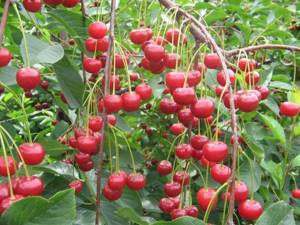
- Shubinka;
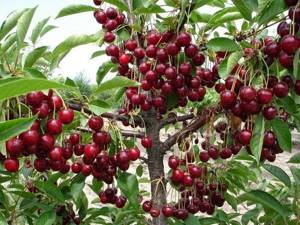
- Vladimirskaya;
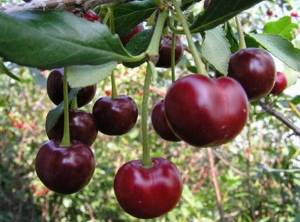
- Rastunya.

In this group, the flowering overlaps slightly with the other two. The buds open when the ovaries have actually appeared in early tree species, and wither when the flowers bloom in late varieties. Typically this process occurs from May 7-10 to May 15.
Representatives of late bloomers:
- Antonovka Kostychevskaya;
- Lyubskaya;
- Fertile Michurina;
- Beauty of the North.
Of course, the timing of flowering also affects when the fruits ripen. Thus, those cherries that awaken earlier than their other counterparts produce ripe berries by July 1st. Trees classified as mid-flowering bear fruit in the middle, while late-flowering trees bear fruit by the end of July, and sometimes by the beginning of August.
Among the types of sour cherries, there are species that differ in the speed of flowering, but the timing is usually always average - this is approximately mid-May.
Representatives descended from their ancestor, the steppe cherry, are distinguished by the latest blooming of not only buds, but also flowers. As a rule, this is the middle ten days of May or even the end of the month.
We recommend: How to graft an apple tree
Reason 4: improper care of cherries
How to create conditions for cherry blossoms to bloom? To a large extent, with proper care. Let's look at the mistakes that lead to poor flowering, which you may not pay attention to due to inexperience.
Incorrect watering. A constant excess of moisture, just like a lack of it or a high groundwater level at the planting site, can have a bad effect on the health of your tree. The cherry tree should be watered several times a season, offering it 2-6 buckets of non-cold water, depending on the size of the tree. The first is immediately after flowering (simultaneously with fertilizing). The second is after the berries are formed. Further watering is carried out depending on temperature, amount of precipitation, and soil characteristics. The last (pre-winter) watering is carried out on the eve of autumn frosts, after the leaves have fallen - usually this period falls at the beginning of October.
Lack of nutrients can also negatively affect a tree preparing to flower. If the cherry tree is planted on poor or unsuitable soil, it must be systematically and properly fertilized. The acidity of the soil should be brought closer to neutral if possible (lime acidic peat, add organic matter and clay to sandy soil). To improve the quality of the soil, dig it thoroughly, add ground eggshells or chalk, and mulch the tree trunk. To enrich the soil, apply organic fertilizers (humus, rotted manure, wood ash) in the spring.
Dose ready-made complex fertilizers strictly so that instead of causing a lack of nutrients, you do not cause an excess of them
Untimely pruning. We have already repeatedly mentioned that competent and timely pruning of any fruit tree is one of the conditions for its health, which extends the productive period of life. Cherry is no exception, rather the opposite, because its crown quickly thickens. Do not forget about timely shaping and rejuvenating pruning of your garden.
- Cherry pruning - forming the correct crown year after year
How and when to prune cherries so that they always produce a good harvest.
Weakening of the cherry can also cause excessive gum production , which is formed due to mechanical damage to the wood or improper maintenance conditions. In this case, you should carefully examine the tree, find all wound surfaces, remove the resin from them and treat them with a 1% solution of copper sulfate. The damaged area should then be cleaned down to living tissue, and cuts and cracks should be “sealed” with garden varnish.
Reason 2: the tree is too young
Oddly enough, this is one of the fairly common reasons for “non-blooming”. Inexperienced gardeners may begin to worry as early as 2-3 years. It seems that the tree has taken root well, is beautiful and healthy, but it still doesn’t bloom! Don't worry at this stage - your cherry may just be young. Depending on the variety and growing conditions, some cherries, even with proper care, begin to bear fruit in the 4th, 5th, or even only the 6th year. Check the qualities of the variety you choose and make sure you are caring for the tree correctly.
- 7 most important questions about growing cherries
We answer the most common questions that arise when growing cherries not only from beginners, but also from experienced gardeners.
Brief description of popular varieties and types of cherry trees/bushes
More than 20 varieties of garden cherries and sweet cherries are grown in Russia; there are over 150 in the world. Cherries have been completely domesticated over the past centuries, and wild forms are no longer found. In scientific debates about what a cherry is, it is more often considered a plant descended from the crossing of wild species of steppe cherries and sweet cherries. The culture obtained through the process of artificial selection displaced its ancestors from the forests due to the fact that it was superior to them in endurance and resistance to negative climatic factors.
Cherry is found only in woody form; felt cherry grows as a shrub. In cherries, the color of the bark varies greatly in the spectrum from red to silver; the fruits of different varieties can be yellow, burgundy or brown when ripe.
Important! Despite the cold-resistant qualities of the entire genus, garden cherries are more resistant to frost than sweet cherries.
Ripening time
When do cherries ripen? Varieties are divided into categories according to ripening periods: early, mid-ripening and late. This important parameter determines how long the cherry blossoms, the period of formation of the berries and their ripening. In other words, the growing season indicates how soon after the start of the warm season the harvest will be harvested.
Early ripening varieties that produce a harvest in July have the following names:
- Waiting – chokeberry;
- Consumer goods – large and tasty cherries;
- Crimson - weaker in terms of cold resistance, cherries with a bright crimson color.
Medium-term ripening for the following varieties:
- Surprise is a persistent non-self-pollinating variety with large red berries;
- Zagoryevskaya - cherry, vulnerable to diseases, but very cold-resistant;
- Anthracite - dark berries, very resistant to frost, pathogens, self-pollinating;
- Cinderella - light berries with excellent resistance to cold and disease;
- Rossoshanskaya - ripe black berries, tolerates irregular watering, drought, cold;
- Meeting, Note, Companion, Solidarity, Look, Noticeable, Revival.
The fruits of the following varieties will ripen later than everyone else, at the end of the fruiting season:
- Rusinka - dark sour berries, frost-resistant, a small shrub up to two meters;
- Lyubskaya - gives a large harvest;
- Belle - tolerates frost well and bears a lot of fruit;
- Nord Star - self-pollinates, not susceptible to fungal diseases;
- Toy and Erudite.
A good solution for a large garden would be to plant plants from different categories, which will expand the time frame for harvesting cherries. One after another, the early varieties will ripen first, then the mid-ripening ones and at the end of the season the cherries that ripen later than everyone else.
For a site in a temperate zone, in which, for example, the city of Voronezh is located, it is worth choosing varieties with a short ripening period.
Planting cherry seedlings
A combination of qualities needed by a gardener
To ensure the efficiency of their work, owners of gardens and vegetable gardens must think in advance about a plan for growing any fruit and berry plant, including cherries.
Important! The main thing that needs to be identified as the main obstacles is climatic conditions, diseases and pests common in neighboring areas, and the required characteristics of the variety.
Depending on the needs of the gardener, the variety is selected with the most suitable description. It is better to study in advance the theory characterizing this variety, become familiar with the common difficulties encountered during cultivation, and the market price of plants.
When you have several varieties in mind that fully satisfy the gardener’s wishes with their description, all that remains is to get the seedlings at the right time. If the owner prefers to buy seedlings from specialized farms or stores, you should place an order in advance. Before planting, you can, by agreement, take cuttings from familiar summer residents who already have fruit-bearing cherries of a suitable variety.
Features of cherry blossoms
An interesting difference between cherry flowers is that they are actinomorphic. This means that you will not find a single flower without at least two symmetrical planes that divide it into two identical halves.
Typically, the flower contains five non-fused leaves in the shape of a bowl; it also has five petals, and they are not fixed in a cluster.
One flower has about 17–20 stamens and one pistil. This is a clear sign common to the entire plum family. Cherries traditionally have an upper ovary. Pollination of flowers occurs thanks to flying insects.
